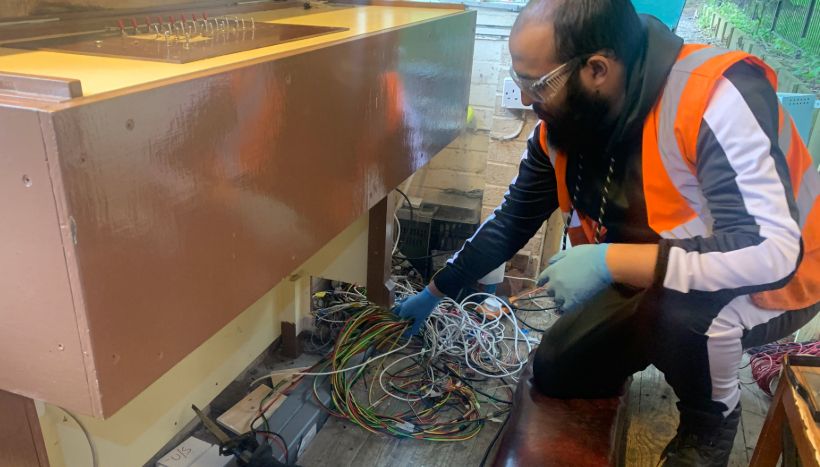T Level students on the right track with Leicester Society of Model Engineers
13 May 2025

Formed in 1909, the Leicester Society of Model Engineers Limited (LSME) is believed to be the fourth-oldest society of model engineers in the world. It has been sited at Abbey Park in Leicester since the 1950s, where it continues to be enjoyed by members and the public alike.
Ray Armstrong from the LSME suggests that: “like many societies, we have an ageing, predominately white male ‘middle England’ membership, with our older members becoming less able to continue to support and maintain LSME’s equipment, including our relay-based track signalling system, installed in the early 1980s.
“Improved safety has always been our number one priority, and so the decision was made to seek a replacement for the track signalling system that will serve the needs of the society for the next 20-30 years, to be supported in-house, or, if need be, by third parties.
“We wanted it to be fully documented, provide our Station Masters and members with real-time information including signal status, locations and speeds of trains, as well as being expandable for future changes and using technology that is current and future-proof.
“The society has been successful in attracting younger, more ethnically and gender-diverse members post-Covid. Some of our newer members come with significant automation experience, and whilst this project could have been done ‘in-house’, the decision was to establish links with a local college so that LSME members could mentor and guide students through all phases of the project including design, manufacture, bench testing, installation, commissioning and site acceptance testing.”
Helping to successfully complete the project
Ray continues: “We contacted Leicester College and were delighted that there was a real appetite from the College to collaborate with LSME to help deliver this project. As of today, we have three T Level Electrical Engineering students and three T Level Mechanical Engineering students, one day per week as their industrial placement and all contributing to the society.”
The students have helped with designs and electrical drawings, component selection, refurbishing carriages, mechanical layouts, wiring and cabling, hardware testing, developing software and installing cameras.
“Following the successful completion of the project, we opened as planned and, as each public running session passed, members’ confidence grew as drivers, guards and Station Masters gained experience of the new system. Plans are already in place to further expand the system,” adds Ray.
Passing on experience and expertise
“Many of our members have a huge wealth of engineering experience, having worked for the likes of Rolls-Royce, British Shoe and GE during their respective careers. It was reassuring to see these people working with the T Level students, sharing their experience and thoughts. Members can see the potential of working with the younger generation and some have also visited the College,” says Ray.
“The students and the College should be proud of what they’ve achieved. It’s given them a taste of what’s to come in the industry and helped them to gain employability skills and a real work ethic. Some students have talked about staying in the industry.”
Proof of a collaborative approach
Ray concludes: “Furthermore, most of the students joined the society and were active members, albeit, as they moved on through their studies, some didn’t renew their membership. However, this has helped to reduce the average age of our membership and secure the future of the LSME.
“Through this collaborative project, LSME has demonstrated what can be achieved by engaging with local colleges, industry partners and engineering students, where all parties have taken away positives from this experience. We would encourage other societies to grasp any opportunity they can to bring in the next generation!”